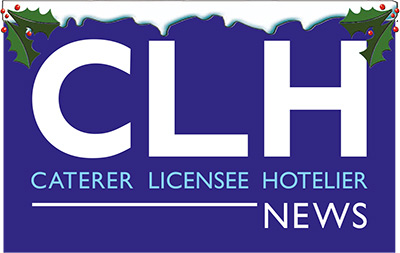How To Navigate The Confusing Ordering And Payment App Landscape

By Nick White, head of alcohol at SHS Group, owner of WKD (www.shs-group.co.uk)
The hospitality industry hasn’t always adopted technology as quickly as it might*. After all, going to the pub is about meeting people and having personal experiences.
Adding screens, apps or automat- ed processes into the equation has been considered a quick way to kill the ambience.
However, COVID-19 has disrupt- ed the industry hugely.With estab- lishments serving tentatively, they must think about technology to meet government guidelines.These require table service where possi- ble, and encourage use of contact- less ordering through an app**.
This presents a challenge – especially for smaller businesses and independents, which might’ve rushed to choose an app, or are still attempting to find one.While big players have their own, not everyone has capacity to build software from scratch.
So, what are the options, and what factors should the on-trade consider as we settle into the new normal? Also, what benefits come with apps and can these be seen as opportunities rather than a threats?
CONSIDERING THE APP MARKET
The first challenge to face is the volume of apps available. Plenty have been around for some time, but many more have come to market and are invest- ing heavily in self-promotion.There’s app2table, Dines, Hungrrr, KitchenCut, OrderPay, Pepper, Sort-It, Swiftly, Tabology and Yoello to name a few.
Key functions to consider are: does it allow people to order food and drink? Can customers make payments? Can they book tables? The first two should be considered absolute musts.The third is something to think about, but not all apps offer this. Swiftly, launched by Heineken, does all three. It doesn’t require businesses to serve Heineken, although those that do receive preferential pricing.
It’s crucial to factor in costs.There’s a mix of options, including upfront pay- ments, registration fees, monthly subscriptions and commissions on sales. Each app has its own offering. For example, Dines has no set-up fee or con- tracts and its basic package takes 2.5% commission, plus 20p per transaction.
Meanwhile, SortIt starts at £25 per month with a £99 set-up fee. Ultimately, the decision is in the hands of establishments and will depend on customer numbers and fixed or variable cost preferences.
Next on the check-list is whether you can “whitelabel” the app. Can you add branding to make it look and feel your own? While not essential, it can enhance customer experience. app2table and Tabology offer this among others.
It’s worth knowing if the app allows additional services – such as toilet requests – or if it can integrate with other systems, such as tills and printers. Many offer this functionality, but it’s worth checking your existing technology and how it might fit in.
Also consider whether you need an app at all. It might be easier to have a browser-based system or one with QR codes. Some customers just don’t want another app. Dines work both as an app and from smartphone web browsers. Yoello requires no app download.
The most important consideration is security. Remember, any business using apps will be entrusting customer information and payment details to them. All of those available meet certain standards, but look for ones proving their trustworthiness.
For example,Yoello is authorised and regulated by the Financial Conduct Authority as a secure and trusted Payment Institution. Ensure you check any app’s credentials – especially if it’s newer, relatively unknown or free.
LOOKING TO THE FUTURE
With apps creating a new relationship between customers and the on- trade, consider how this might be an opportunity rather than a hurdle. Many can offer customer insights and databases, which present marketing opportu- nities and the chance to create personalised offers.While high-quality staff and service will always be important, perhaps it’s time to start attracting cus- tomers with deals you know they’ll love.What’s not to like? An establishment that knows what its clientele love and is willing to provide discount and a friendly welcome?
Equally, apps can link sales to your supply chain more effectively. It sounds over the top for independents, but could spell the end of certain drinks run- ning out mid-shift. It can also help manage food wastage, maximising profits and building a more robust business.
To conclude, apps are new to the majority of the industry, and hasty deci- sions might need to be reconsidered later. Keep an eye on how things progress, monitor how effectively apps work and look for opportunities rather than threats. Good luck – we’re rooting for you.
* https://www.hospitalitynet.org/panel/125000007.html
** https://www.gov.uk/government/news/pubs-restaurants-and-hairdressers-to-reopen-from-4-july
